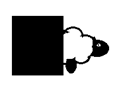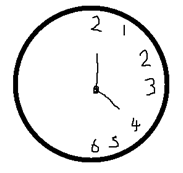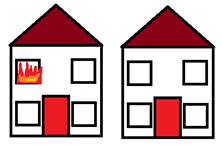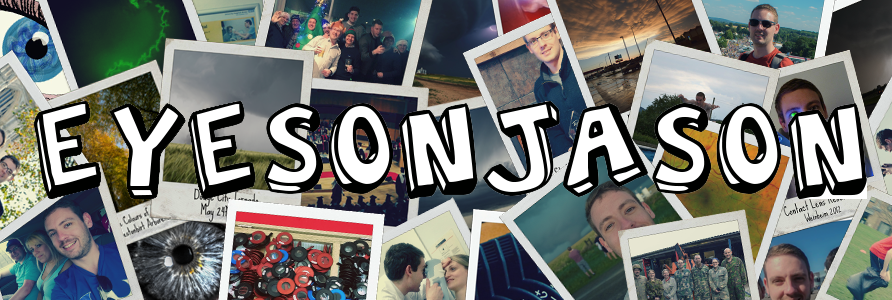Visual Attention, Imagery and Memory
Contents
Introduction to Visual Attention
Introduction to Visual Attention
The visual system needs to prioritise what it would like to see in the visual scene and visual attention enables us to be able to process selected aspects of the retinal image over non-selected aspects. For example, the photograph shows that we focus more on the dandelion head than on the background. We can still see the background and other aspects of the scene but our visual system is not attending to them. This selection is made automatically at a non-conscious level.

Selecting attention, the dandelion head is attended to, but the background is not.
Cues to Visual Attention (Top)
If we are focusing on something and a distracting object or sound suddenly appears elsewhere, then we will often briefly divert our attention to this new object or sound. Additionally, if we are talking to someone and they suddenly shift their gaze, we will reflectively divert our attention to the same direction.
We are also drawn to odd objects in the scene as our pre-attentive vision draws our attention to objects with an unexpected appearance. This is demonstrated in the figure below:

The visual system is drawn to odd objects in the visual scene. You are likely to have drawn attention to the blue sheep first when looking at this figure due to its odd and unexpected appearance.
On a higher level, expectation and intention guide us and our attention towards certain objects. An example of this is in "Where's Wally", where attention is drawn to parts of the scene that display his characteristic red and white stripes, so we therefore check these areas first.
Furthermore, if you are searching for particular objects, such as your keys, then our attention actively seeks out key-shaped objects.
Perceptual Consequences of Attention (Top)
It has been suggested that attention enhances spatial resolution and increases contrast sensitivity, with the possibility that it also boosts the strength and quality of neural signals evoked by an object. It is also thought that attention reduces the variability in perception and speeds up the perceptual responses.

Attention focuses on all of the object and not just part
We also focus attention upon the whole of an object and not just part of it. This is even the case when part of the object is obscured. This is seen in the figure, where the animal can still be seen to be a sheep, even though half of it is obscured by the block.
Overt Attention and Covert Attention (Top)
There are two types of attention - overt attention and covert attention.
OVERT ATTENTION:
Overt attention is directly fixating the eyes and gaze towards the desired object of interest.
COVERT ATTENTION:
Covert attention is the mentally direction of attention towards objects of interest within the visual field and suppressing the non-attended items in our view.
Therefore it is possible to covertly attend to something when your eyes are pointing in a different direction, but there must be a suppression of the reflex to make the eye movement to foveate upon the object of interest.
These covert and overt attention mechanisms are closely related:
1. First we scan the visual scene using our covert attention to look for interesting locations.
2. This is followed by a shift from covert attention to overt attention where we look at the object of interest directly.
3. The shift in covert attention is linked to the eye circuitry and we make a slower saccade to foveate upon the location of interest.
Attention Blindness (Top)
The human system is prone to a form of blindness that occurs when it focuses on a single thing. Inattentional blindness is a form of attention blindness where we are impaired in perceiving the appearance of unexpected objects. An example of this is when we are concentrating on part of the scene that we may not notice fairly obvious things happening elsewhere within the visual scene (i.e. we see it but don't notice it). There is a famous video where you are asked to count the passes between a certain team of basketball players and during the video a man in a gorilla costume appears and leaves. Most people are inattentionally blind to the gorilla as they count the basketball passes.
The original, world-famous awareness test from Daniel Simons and Christopher Chabri. Source/YouTube
This attention blindness has particular real-world problems. This would be a major problem in driving, where the driver has sole attention on the road in front of them that they may not notice cyclists or pedestrians coming off of the pavement.
Change Blindness (Top)
Change blindness is when observers fail to perceive quite an obvious change (or changes) in a scene over time, if the changes are separated by a transient event such as a blank frame or an eye movement. It is the inability to compare the scene with the previous image of the scene stored from memory.
Another experiment has shown that people are very susceptible to this form of blindness and hidden-camera prank shows often capitalise on this by filming a man asking for directions, letting a large object suddenly come between them and swapping the man who is asking the questions. Many unwitting suspects are completely unaware the person, who looks different and is wearing different clothes, is not the same person. A good video by NOVA on this can be seen below:
A demonstration and explanation on change blindness. Source/YouTube
Physiology of Attention (Top)
It is the parietal lobe that is concerned with attention, especially the lobe in the right hemisphere. There is quite a bit of evidence that supports this:
Unilateral Neglect
Unilateral neglect is where patients fail to notice objects on the opposite side of the visual scene after brain injury to the parietal lobe. There is not an associated visual field loss, it is just that the patient cannot pay attention the one half of their visual field.
This is most commonly caused by a stroke in the right hand side of the brain that causes neglect of the left visual field. This is because the right hand side is the most responsible for visual attention.
Additionally, this can cause egocentric neglect, where the patient neglects everything on the left hand side of their body (from the vertical mid-plane) and allocentric neglect, where patients neglect the left side of every stimulus, regardless of its position in space.

Left hemifield neglect - the patient does not attend to the left visual field even though they can see it.
Balint's Syndrome
Balint's syndrome occurs where there is bilateral damage to the parietal cortex (due to stroke/alzheimers/tumours/trauma) and this syndrome has four main symptoms:
1. Ocular motor apraxia: This is the inability to change fixation (the patient will fix at a location but struggle to shift fixation without first closing their eyes).
2. Simultagnosia: This is the inability to see more than just one object during fixation.
3. Spatial Disorientation: Spatial disorientation is the inability to correctly localise an object.
4. Optic Ataxia: This is the inability to grasp a clearly perceived object.
These generally cause the patient to have a functional blindness.
Positron Emission Tomography (PET) Studies
Positron emission tomography studies have shown that a normal subject attending to the left visual field causes an activation of the right parietal cortex and that normal subjects attending to the right visual field will activity in both parietal cortices. This shows that attention occurs in the parietal cortex and due to the right parietal cortex activating regardless of visual field location, that this attention mainly occurs in the right parietal cortex.
Visual Imagery (Top)
If you try an remember a visual scene, you are creating a mental image. To build a mental image, you use memory collected by the eyes from a previous time, potentially many years ago.
Visual imagery is the processes involved in generating, examining and manipulating visual images.
Perception is what occurs in the brain when you look at an object. Basically you perceive what you can directly see (i.e. a banana is placed in front of you and you perceive the banana). Imagery is what is seen when you "see" mentally an object that is not placed in front of you (i.e. an empty plate in front of you and you imagine a cake in the centre, then the image seen in imagery).
Both visual imagery and perception share a common process (activation of area V1). There are patients however that have deficits in one and not the other (i.e. can perceive but not imagine and imagine but not perceive).
The mental image of an object closely resembles that of the actual object, but with the high spatial frequencies removed - i.e. some loss of fine detail removed, but the general image of the object is clearly seen.
The presentation of visual information over periods of time last from fractions of seconds to decades after the optical source of the information is no longer available. It is the right visual cortex that appears to process this visual memory, where the inferotemporal cortex (area IT) is where visual perception interfaces with visual imagery and memory.
Visual Memory (Top)
When it comes to memorising what our visual system has seen, there are three systems our brains utilise:
Iconic Memory
Iconic memory provides information of retinal image location, size, shape and colour (i.e. all of the low level information about the object seen). Iconic memory has an extremely high capacity for gathering information but it lasts very briefly (only 0.5 to 1.0 seconds).
Short-Term Memory
Short term memory provides spatial information about the visual scene, but it is limited to the last presentation. This is because this form of memory decays if not attended to or if similar visual inputs replace it. This can be prevented if the subject rehearses what has been taken in. This form of memory lasts up to 30 seconds.
Long-Term Memory
Long term memory is a comprehensive system that contains information provided by the other senses. It can last any time beyond 30 seconds and continue for decades.
The three can be demonstrated by briefly presenting an array of 12 letters for ½ a second. Most people when questioned can remember between 3 and 4 of the letters being presented but not any more than that, even though they were aware that other letters were present. All letters are believed to have briefly registered with iconic memory, but they are not accessed fully as they vanished too quickly. The few letters that were remembered immediately come from the low capacity short term memory (which lasts longer than the iconic memory) and any letters that are still remembered after the test will be part of the long term memory.
Cortical Plasticity (Top)
Cortical plasticity is the person's perceptual experience shaping the structure and function of the visual system. The critical period is the duration of life over which cortical plasticity occurs. This is different for different parts of the brain, with vision only being plastic for the first few years of life. Memory however, has a much longer plasticity period.
Plasticity does decrease with age, with neural circuitry changing less dramatically over time and changes taking much longer to develop. Recovery from cortical trauma is limited in older patients, whereas younger patients with a younger neural system do not take as long to reach their maximal recovery.
Perceptual Learning (Top)
Recovery and improvement of cortical processes in adulthood can occur in some situations. The perceptual learning is the long lasting ability of change of the perceptual system which improves the ability to respond to the environment.
An example of this would be if an adult is given inverted prism spectacles (which would invert the world as so it is upside down). After a few days, the brain reorganises itself to re-invert itself through cortical remodelling. This effect will last for a similar amount of time when the spectacles are removed, where the brain will have to re-invert itself again to see the correct way up.
Perceptual learning is not just limited to reinversion of the retinal image. The visual system can also modify other visual function through perceptual learning such as contrast sensitivity, detection of orientation and motion perception
Visual Awareness (Top)
Vision is not just dependent on perception of the visual scene but an awareness of what we are seeing. There are some cases where people can have perceptual analysis without actually having visual awareness.
Prosopagnosia
Prosopagnosia is the difficulty in recognising faces. Analysis occurs over awareness as it has been shown that identification of whether two faces are the same or different is quicker when the face is familiar and much slower if the face is unfamiliar. This occurs even though the patient is unable to recognise faces.

Analysis without awareness. Left hemifield neglect patients see the two houses as identical, but would prefer to live in the one without the fire.
Unilateral Neglect
The houses in the figure were analysed by patients with parietal lobe damage. To the patient with hemifield neglect, the houses look identical and they could not spot the difference. However, when asked which one they would prefer to live in, the subject would always pick the house without the fire, demonstrating that they may be able to perceptually analyse the image without actually being aware of it.
Blindsight
Certain patients with a damaged or absent area V1 that do not have conscious vision can respond to visual greater than chance accuracy. It is though that some detail may be mediated by the subcortical collicular (retinotectal) pathway. They show good performance in simple forced choice tasks where the targets are large and presented for a long time, but is not good for use in everyday life as blindsight cannot support intentional actions.
THIS CONCLUDES THE UNIT ON VISUAL ATTENTION,
IMAGERY AND MEMORY
RETURN TO TOP OF PAGE - UNIT 11: VISUAL ILLUSIONS (COMING SOON)
